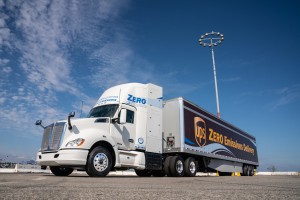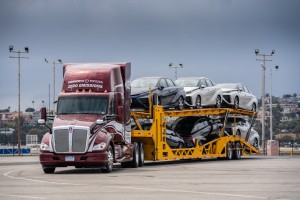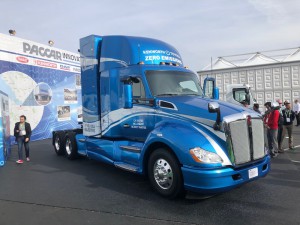Toyota and Kenworth have launched a new generation of zero-emission trucks powered by fuel cells that will operate in and around the sprawling Port of Los Angeles.
“Toyota is committed to fuel cell electric technology as a powertrain for the future because it’s a clean, scalable platform that can meet a broad range of mobility needs with zero emissions,” said Bob Carter, Toyota executive vice president for Automotive Operations.
Carter said the collaboration with Kenworth, the Port of Los Angeles and the California Air Resources Board through the “Shore-to-Store” project allows Toyota to move Heavy-Duty Truck Fuel Cell Electric technology towards commercialization.
The new zero-emission trucks build on the capabilities of Toyota’s first two Project Portal Proof of Concept trucks through enhanced capability, packaging and performance; offering an estimated range of more than 300 miles per fill, twice that of a typical drayage trucks’ average daily duty cycle.
(Toyota teaming up with Paccar to build at test fleet of hydrogen semis. Click Here for the story.)
Toyota and Kenworth will deploy a total of 10 trucks as part of the Zero-and-Near-Zero Emission Freight Facilities Project, known as ZANZEFF, hauling cargo received at the Ports of Los Angeles and Long Beach, throughout the L.A. Basin.
CARB has granted $41 million dollars to the Port of Los Angeles for the ZANZEFF project as part, a California Climate Change initiative that puts money from the state’s cap-and-trade program to work reducing greenhouse gas emissions, strengthening the economy and improving public health and the environment, particularly in disadvantaged communities.
“This substantial climate investment by the state, matched by the project partners, will help speed up the number of zero-emission trucks in the California communities and neighborhoods where they are needed the most,” said CARB Chair Mary Nichols.
(Click Here for more about Japan going all in on fuel cells.)
“It will provide a real world at-work demonstration of innovative heavy-duty fuel cell electric technologies. The project offers a commercial solution to move cargo and freight around the state using zero-emission trucks and equipment that protect air quality and cut climate-changing emissions,” she said.
Since operations began in April 2017, the Project Portal “Alpha” and “Beta” Proof of Concept Class 8 trucks have logged more than 14,000 miles of testing and real-world drayage operations in and around the ports of Los Angeles and Long Beach while emitting nothing but water vapor.
The first Kenworth/Toyota FCET under the ZANZEFF project will begin drayage operations in the fourth quarter, increasing the ports’ zero emission trucking capacity and further reducing the environmental impact of drayage operations.
(Toyota setting up L.A. plant to convert animal waste to clean hydrogen. Click Here for the story.)
The Port of Los Angeles was targeted for the project because the area around the port has some of the dirtiest are in the region because of the heavy particulate emissions from old diesel engines widely used by trucking companies operating around the port, according to a number of studies, including influential study done by UCLA, that surveyed the impact of pollution on the health of residents, living near the port.



